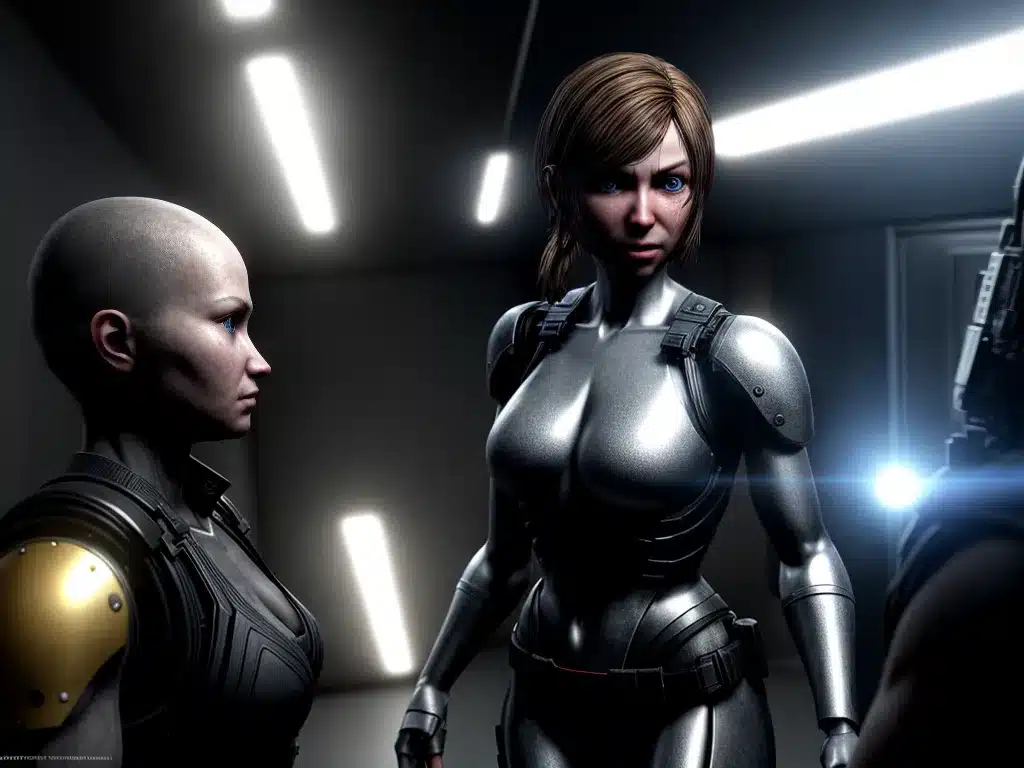For years, game developers have strived to achieve photorealistic graphics that emulate real life. With each new console generation and graphics engine iteration, we inch closer and closer to this ideal. However, there has long been an obstacle standing in the way of true photorealism – the uncanny valley. This phenomenon describes the unsettling feeling we get when seeing computer-generated humans and humanlike characters that appear almost, but not quite, real.
In this article, I explore the evolution of photorealism in games and whether modern titles are finally crossing the uncanny valley into true photorealistic fidelity.
A Brief History of Photorealism in Games
Game graphics have come a remarkably long way in a relatively short time. Consider the following milestones:
-
Early 3D era (mid-1990s) – Games like Virtua Fighter and Tomb Raider pioneered 3D visuals, but environments and characters were still highly polygonal and cartoonish.
-
Early 2000s – Titles like Half-Life 2 and Doom 3 introduced better lighting, textures, and post-processing effects for more realistic visuals. However, characters still looked obviously computer generated.
-
High definition era (2007-present) – The Xbox 360, PlayStation 3, and modern PCs enabled much higher display resolutions and more detailed assets. Games like Gears of War and Uncharted approached photorealism but were limited by hardware capabilities.
-
Modern consoles (2013-present) – The Xbox One, PS4, and high-end PCs can render highly complex scenes in real-time with great detail thanks to advanced rendering techniques. Some environments are now photographically realistic.
The Uncanny Valley
So games keep looking better, but there’s a problem – the closer they get to reality, the more flawed they look. This conundrum is the uncanny valley.
The term comes from robotics professor Masahiro Mori, who observed that as robots and 3D characters become more humanlike, we respond positively to them. However, there reaches a point where tiny imperfections cause revulsion because the characters are nearly indistinguishable from real humans.
This dip into eeriness is the uncanny valley. For games, flaws like lifeless eyes, stiff movement, and unnatural skin can making photorealistic characters feel creepy or zombie-like. These unsettling effects pull players out of the experience.
Pushing Past the Uncanny Valley
Modern games are employing various strategies to cross the uncanny valley:
-
Higher resolution assets – Skin pores, individual strands of hair, and fine wrinkles make faces more believable.
-
Ray tracing – This advanced lighting technique accurately simulates how light interacts with objects, creating more photorealistic reflections, shadows, and global illumination.
-
Better motion capture – High fidelity performance capture records actors’ precise facial expressions and movements to animate digital characters.
-
Deep learning AI – Nvidia’s DLSS 2 uses neural networks to generate incredibly lifelike facial animations on par with human expressions.
-
Photogrammetry – Scanning real-world objects and environments allows importing them into games photorealistically.
Case Studies
Let’s look at two recent games praised for their photorealism and see how they crossed the uncanny valley.
Hellblade: Senua’s Sacrifice (2017)
This independent game uses photogrammetry and motion capture to portray its protagonist’s emotional journey through a fantasy world.
- Senua’s highly detailed face was built from 3D scans of actress Melina Juergens to look beautifully lifelike.
- Her expressions and movements were recorded through Melina’s motion capture performance.
- The blend of real facial geometry and convincing performance capture brings Senua to life emotionally. She avoids the uncanny valley.
Marvel’s Spider-Man (2018)
This big budget superhero game convincingly renders a near-future New York City.
- Photogrammetry was used to create extremely accurate 3D models of Manhattan buildings.
- Ray traced reflections, ambient occlusion, and other effects make environments photorealistic.
- While deemphasized compared to environments, characters like Peter Parker look believably human thanks to performance capture and materials that simulate skin, hair, and cloth well.
Marvel’s Spider-Man demonstrates that we are approaching the computing power needed for photorealistic game worlds.
The Future
We are certainly closer than ever before to bridging the uncanny valley. However, there are still limitations to overcome:
-
The cost – Techniques like photogrammetry and performance capture are expensive for large scale production.
-
Artificial movement – Characters still move in subtly unnatural ways that undermine realism.
-
Believability over accuracy – Absolutely perfect reproduction may not actually be ideal. Some artistic interpretation can make scenes more emotionally compelling.
With machine learning algorithms, cloud computing, and ever more powerful hardware, we will eventually achieve true photorealism. But overcoming the uncanny valley requires technical mastery paired with artistry. Game creators must balance realism with their own vision to make experiences that feel human, not just look human.
While we still await photorealistic digital humans indistinguishable from reality, games have come astoundingly far. Given the rapid progress to date, the most realistic, immersive games may only be a few short years away. I am excited to one day enter photorealistic worlds and interact with characters that give me an authentic emotional connection. This has been a dream for decades, and it now finally feels within reach.













